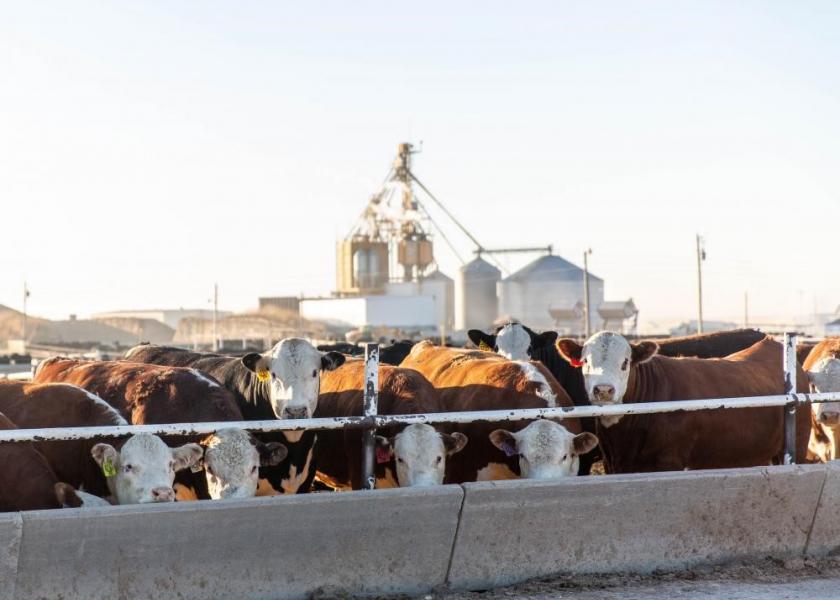Hereford Feedout Program Success Continues

Hereford breeders and commercial users of Hereford genetics enrolled a record number of steers in the 2022 Hereford Feedout Program to find out how their genetics perform in the feedlot and on the rail.
Cattle arrived at HRC Feed Yards in Scott City, Kan., in December for a feeding period ending in May-June. Program participants receive feedlot performance data throughout the feeding period and individual carcass data at harvest.
"The impressive carcass data from the first group harvested is a testament to the value of Hereford genetics and the diligence of progressive producers wanting to provide the highest quality beef," says Trey Befort, American Hereford Association (AHA) director of commercial programs. "As this year’s program concludes, the data we will be able to provide the industry will reinforce the value of Hereford genetics for both purebred and commercial producers wanting to continue improving carcass quality and feed yard performance. Previous research has shown the feed efficiency advantages of Hereford genetics and the cattle in this program will further validate those studies."
Cattle from the Hereford Feedout Program are harvested by National Beef Packing Company, which is the licensed beef processor for Certified Hereford Beef® (CHB). Cattle in the Hereford Fed Steer Shootout Program are candidates for CHB and are marketed on the U.S. Premium Beef® Grid, ultimately providing producers access to industry-leading marketing options.
"Everyone involved in the beef industry has a role in feeding the world," says Lee Mayo, HRC Feed Yards general manager. "If we can teach breeders and have them take ownership and responsibility for the end product, I am really excited to see the progress of the Hereford breed over the next 50 years."
Seedstock and commercial producers interested in participating can contact the AHA or HRC Feed Yards to discuss the program. The enrollment deadline for the 2023 program is Nov. 1. Cattle can be delivered to HRC Feed Yard, Dec. 10 – 14.
"I encourage any producer interested in taking part in the Hereford Feedout Program to contact Lee or myself to understand their options," Befort says. "This unique opportunity is one that can propel an operation forward in terms of genetic selection while also rewarding quality cattle."
For more information visit: Hereford Feedout Programs







